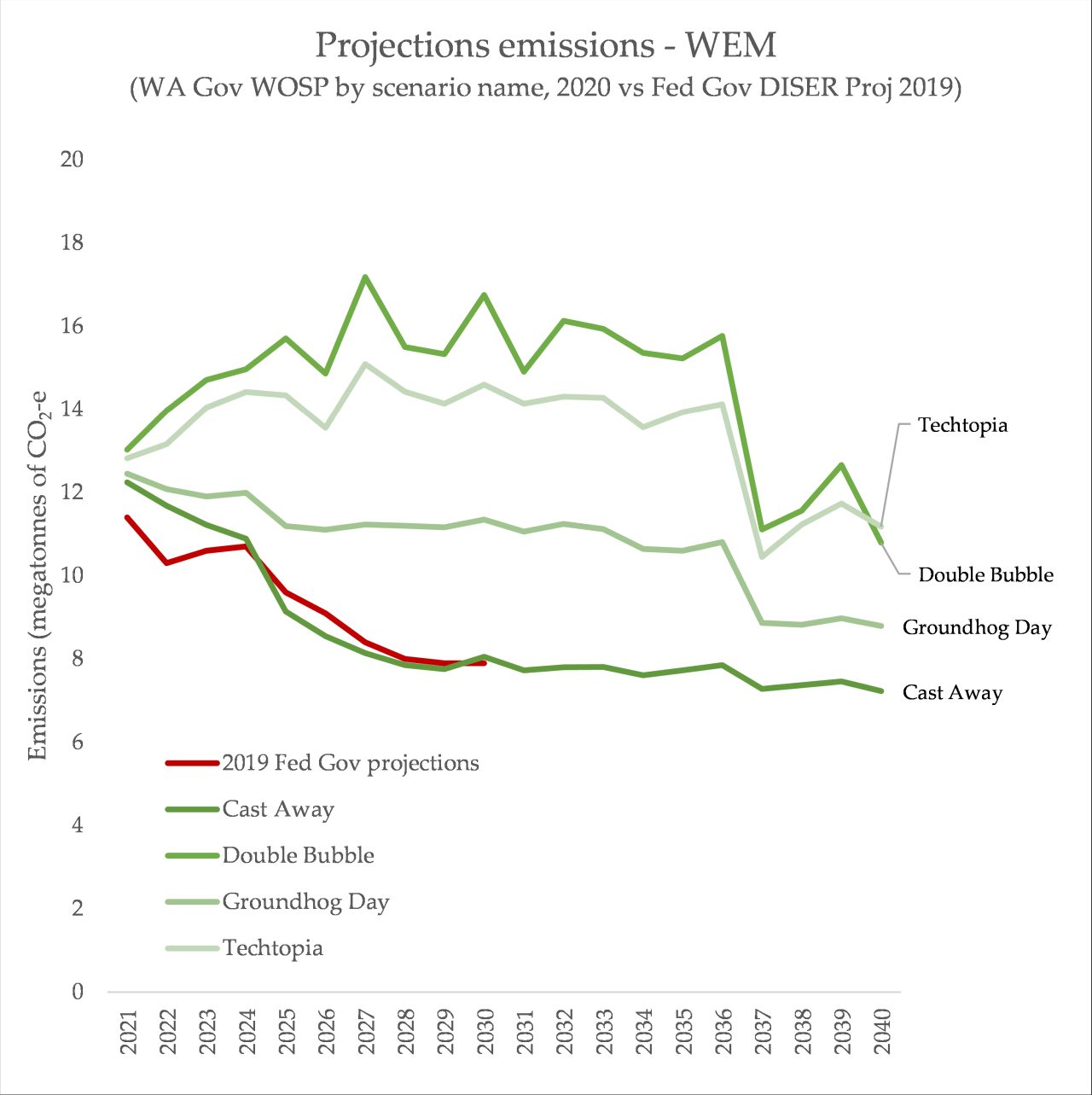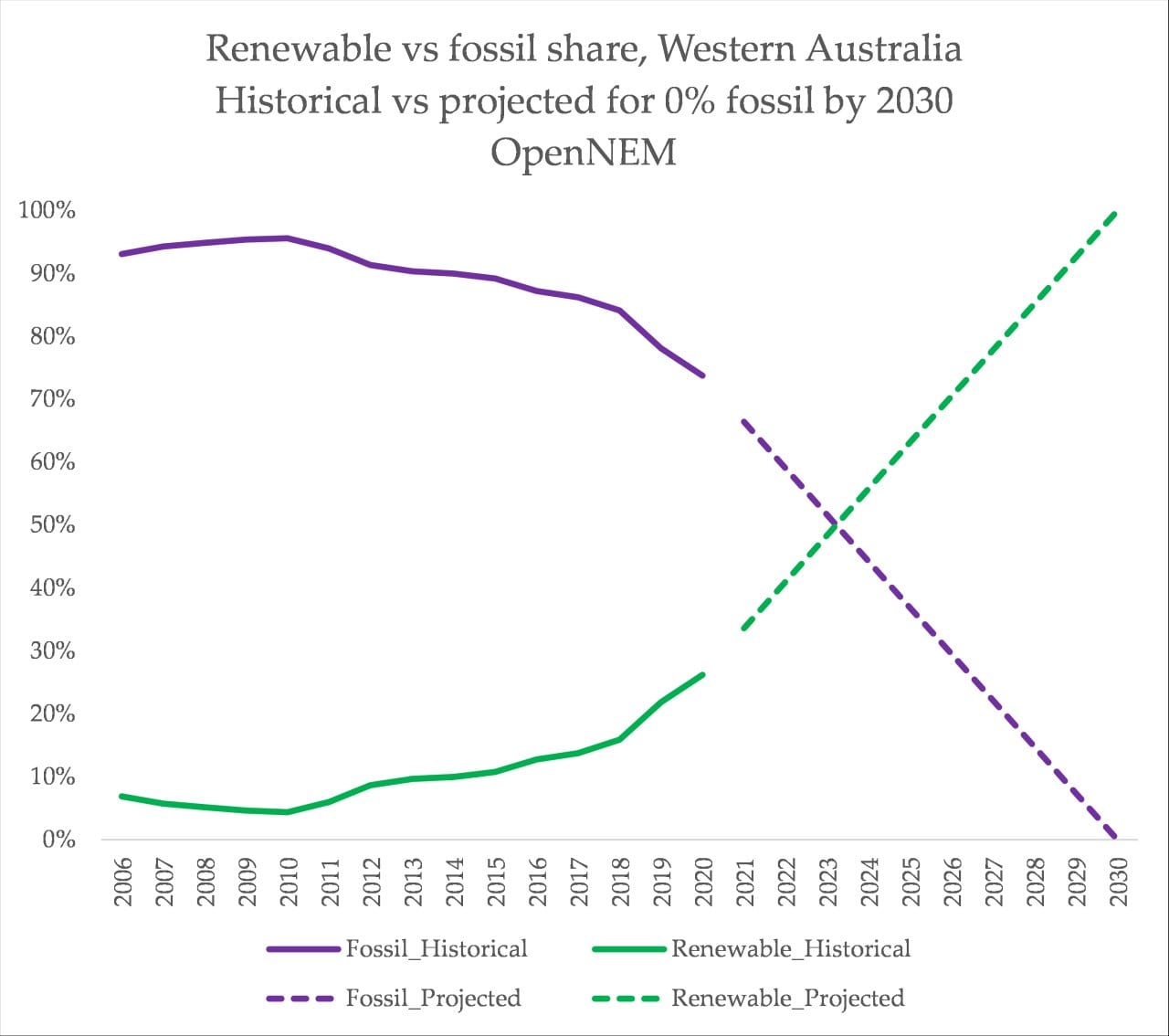Elections are in the air. At some point this year or early next, Australia’s Prime Minister Scott Morrison will announce the federal election. In Western Australia, it’s right around the corner, in March. In anticipation of this, the conservative Liberal West Australian opposition party, led by Zak Kirkup, has been campaigning.
Things weren’t looking up in the climate front – only a few days ago WA Liberal Rod Henderson claimed climate change was a “con”. Historically, they have not been particularly fond of renewables, framing a 50% by 2030 target with “Say not to blackouts like South Australia. Say no to higher power prices for WA families,” almost exactly four years ago:
Labor's 50% renewables target means blackouts like South Australia, higher power prices for WA families & seniors, bad for business & jobs.
— Liberals WA (@LiberalsWA) February 10, 2017
The party is expected to lose quite badly. “We are in survival mode,” one party member told the ABC. So it seems like maintaining the anti-climate-action attitude isn’t particularly smart. And guess what: the opposition party on Thursday releases a climate plan that has some very head-turning numbers in it, but comes with a whole bunch of questions. Some highlights include:
- 100% renewable energy by 2030
- Net zero emissions only for the government by 2030
- Build 1,500 megawatts of solar and wind to power Perth, the South West, Wheatbelt and Kalgoorlie
- Build 4,500 megawatts of wind and solar by 2030, to power the production of hydrogen
- Clean public transport and clean government vehicles by 2030
Like the NSW government, climate change is barely mentioned in the supporting documents. It is about jobs, industry, export, profit and corporations. It’s relatively unsurprising, given the source, and a fascinating further example of major parties trying to chew over how to tackle this problem without mentioning offensive key words.
It’s partly good, partly bad and ultimately missing a key part of what a good climate plan needs.
The good
Though there isn’t much detail, the plan promises a “zero emissions electricity system by 2030”, with all state government energy companies converting to zero emissions. I had to read it a few times; this is actually quite an ambitious goal.
Last year, the Labor WA state government released an expansive ‘whole of system’ plan that detailed their vision of the coming years, through a variety of scenarios. I was critical of that plan, because it essentially avoided putting any muscle into ambitiously ending the role of WA’s coal and gas-fired power stations as soon as possible. In fact, the emissions profile of WA’s grids in that plan all sat above the federal government’s own projections. “Under all four modelling scenarios, over 70% of generation capacity is renewable by 2030”.
“Our electricity system will be powered by 100% renewable energy by 2030, including phasing out all government owned coal-fired power stations within five years”, write the WA Liberals, in their full report. By my reckoning, that looks something like this:
This entails the shut-down or retrofit of three coal-fired power stations and 14 gas-fired power stations within ten years’ time, assuming biogas is excluded. That’s 1.5 gigawatts of coal and 3.3 gigawatts of gas. 100% renewables by 2030 requires a hastening of the change currently occurring in the SWIS, and a maintenance of that pace for a decade:
Some coal was scheduled to close within that time period anyway, but most power stations, particularly gas, are scheduled to retire well after. The report specifies Muja and Collie to close by 2025, and suggest some gas turbines could be converted to hydrogen, with Collie to be converted into what sees to be a synchronous generator and existing transmission lines used to buttress “clean, green heavy industry” and a $100m training plan to transition from coal jobs to green jobs in the Collie region.
The only information about balancing mechanisms for the new wind and solar are a $500m 330kV transmission line and a 500 megawatt battery, both built by Western Power. It’ll be complicated, but it all seems pretty feasible. The strangeness simply comes from the level of ambition – a high level of work, planning and government intervention will be required to achieve a zero emissions WA grid by 2030, and setting a target like this is significant.
In fact, the plan even specifically cites the impact of renewable energy on electricity bills, with an unambiguous declaration that renewables are far cheaper than coal, declaring that the Liberals “will deliver a dramatic reduction in energy prices” due to renewable energy growth. It’s a stark departure from the party’s past reasoning.
A ‘zero emissions project’ comprising of vast quantities of wind and solar far from Geraldton and Shark Bay will produce hydrogen for export, creating a new industry targeting Asian markets. Though there aren’t too many hard numbers or plans here, it does seem like this will be truly clean hydrogen, without a reliance on CCS attached to gas-fired generation. Bigger and better zero emissions export options is something Australian climate campaigners have focused on, and will likely welcome.
There are some bright spots in transport, too. Public transport and state government fleets will be either electrified or running on hydrogen. Despite a lack of clarity on the balance, the ambition is clear and specific and would certainly help partially to bring prices down for those technologies.
The bad
The biggest, most obvious problem in this report is that the “net zero” target is only for the government’s direct emissions footprint, not the whole state’s emissions. “Net Zero Emissions for the Western Australian State Government by 2030, two decades earlier than WA Labor” is misleading. The WA Labor government’s plan is for the whole of the state economy, not just government. In fact, the whole thing feels a little sneaky, given the likelihood this will be misunderstood as a target for the whole economy – it already is.
Australia’s state-level emissions data only go up to 2018, and doesn’t split out how much of all emissions are government. It includes some state-owned coal power, but it’s not the whole deal. Transport, the mining sector, agriculture, land use – they’re all mostly excluded.
Though the plan promises a charging network for EVs, there isn’t anything about incentivising the uptake of zero emissions vehicles, leaving it mostly up to the market. This isn’t that far from Angus Taylor’s plan. The charging network will help, of course, but affordable EVs are needed too. What will emissions from WA’s transport sector be like in 2030, compared to 2020? It’s actually impossible to tell, from this plan.
The state’s expansive mining industry, with gargantuan gas mines causing significant methane leakages, are barely mentioned, save for a brief suggestion of the electrification of remote mining areas. Of course, the oil and gas extracted by Western Australia’s fossil fuel industries is burned overseas, and these emissions are excluded from domestic accounts.
The ambition in the electricity sector might be unusually strong, but most other sectors seem unaddressed. A ‘net zero by 2050’ plan this is not.
The not-appearing-in-this-plan
Both the Labor and Liberal parties in Western Australia fail to provide a detailed, sector-by-sector breakdown of emissions. Not only are both all carrot and no stick, there’s isn’t even any clear picture of what the donkey looks like, where the donkey needs to go, or whether it’s actually a donkey. The absence of information is information – you can always tell what’s being papered over by looking to the gaps. In both cases, it seems like the WA mining industry has been let off the hook.
Being stuck in an endless series of large glossy PDF reports isn’t going to lead particularly far. An ambitious plan to transition the grid is great, but it isn’t sufficient without a plan to address the other sectors. And a net zero by 2050 target has to be for the whole state, not just a part of it.
There are many departures from old Liberal party in this plan, but there’s little information about how this aligns with Australia aiming to reduce emissions aligned with a 1.5C global Paris Agreement target. While it’s fine to celebrate the evolution of a party, the broader goal shouldn’t be forgotten.













